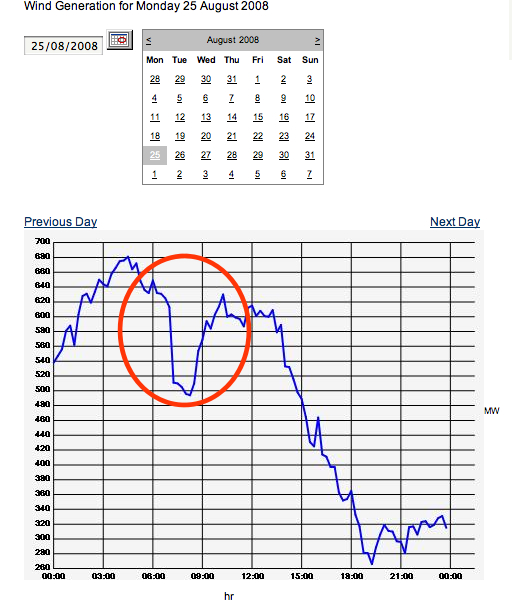I read a fascinating article in the New York Times yesterday about how the electricity grid in New York can’t always cope with the amount of electricity being produced by the Maple Ridge wind farm and so from time to time the wind farm has to shut down production!
This problem is not unique to New York according to the article:
That is a symptom of a broad national problem. Expansive dreams about renewable energy, like Al Gore’s hope of replacing all fossil fuels in a decade, are bumping up against the reality of a power grid that cannot handle the new demands.
The dirty secret of clean energy is that while generating it is getting easier, moving it to market is not.
This is a problem for the owners/operators of Maple Ridge and similar facilities – how do you get a return on investment if the grid operators can shut you down at a moment’s notice? In fact, how do you get investment in the first place if your income is completely controlled by another company?
Nor is this just an American problem, I heard reports this morning that in the last few days, for the first time ever, Eirgrid (the Irish transmission service operator – grid management company) had curtailed production from Irish wind farms. I contacted Eirgrid’s customer services department and confirmed that this had in fact happened and I will be receiving more information from Eirgrid about this early next week.
Ireland is currently sourcing an average 9% of its energy requirements from wind but has committed to moving to a 33% average from renewables by 2020. If the grid is having difficulties taking in wind energy at 9%, how do they hope to get anywhere near 33%?
Even more insane is the fact that if you are a wind energy producer in Ireland, you have to sign a contract allowing Eirgrid to shut you down up to 17% of the time. Yes, you read that right – at a time when countries are trying to reduce their carbon footprint to comply with Kyoto, the Irish grid operator is dissuading investment in wind energy projects by inserting curtailment clauses and now by going the full hog and shutting down wind farms!
Have Eirgrid not heard of Kyoto? Or CO2 emissions? Or the obvious solution to problems like over capacity from wind – demand response?
The problem Eirgrid have is not an over-supply of energy from wind. It is an over-supply of wind energy when demand for electricity is low (6am on a warm summer weekend morning, for example).
With a proper demand response mechanism in place, if too much electricity is being created by wind, instead of shutting down wind farms and risking future investment in renewables, you simply reduce the price of electricity to the market to stimulate an increase in demand!
The market gets cheaper electricity, from clean sources, investors are less wary of investing in wind so more wind farms are financed, the government stands a better chance of reaching its 33% from renewables by its 2020 target and Eirgrid get a more stable grid (as well as helping the govt reach its target) – win, win, win,win, and win!
Nor is this issue limited to Ireland and the US. Any countries hoping to increase the penetration of renewable (variable) energy supplies will need to initiate a demand response mechanism to manage the demand, thereby stabilising the system and allowing for even greater uptake of renewable energy.
You can be sure I will be putting this to Bill Vogel, CEO of Trilliant, when I am talking to him next week.

